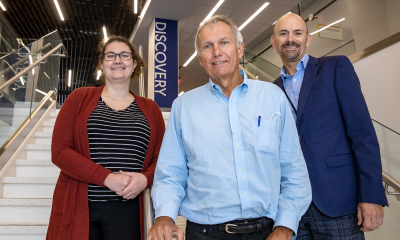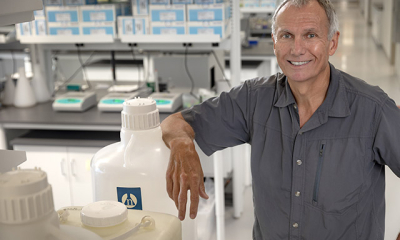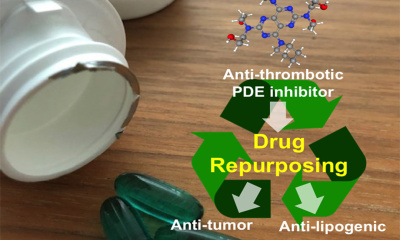
About
Dr. Osborne is associate dean for Basic Research and director of the Johns Hopkins All Children's Institute for Fundamental Biomedical Research. He is a professor of medicine, Biological Chemistry and Pediatrics and a member of the Division of Endocrinology, Diabetes and Metabolism of the Johns Hopkins University School of Medicine.
Dr. Osborne’s career has been focused on the molecular aspects of gene expression and regulation. Born in Ouray, Colorado, he studied fundamental biochemistry and molecular biology at the University of California, Santa Barbara and then earned his Ph.D. in microbiology and molecular biology at UCLA. As a graduate student, he worked on gene regulation in human adenoviruses with Arnold Berk, M.D., at UCLA and was one of the first to construct adenovirus recombinant viruses and analyze their expression in cultured cells. His studies were among the first to show that an AT rich “TATA” sequence was essential for normal RNA pol II gene expression in eukaryotic cells. His studies analyzed this in the normal physiological context of the adenovirus genome, which could not be done for host encoded genes at that time.
He continued his interest in the regulation of gene expression through postdoctoral training at the University of Texas Southwestern Medical Center, working in the lab of Michael Brown, M.D., and Joseph Goldstein, M.D., who won the 1985 Nobel Prize in Physiology or Medicine “for their discoveries concerning the regulation of cholesterol metabolism.” It was during this time that he began a career-long interest in the connection between the metabolic regulation of gene expression and physiology, which continues to be the underlying theme of his research focus to the present day.
Dr. Osborne spent 20 years as a faculty member at UC Irvine, earning the rank of professor in 1998 and he served as chairman of the Department of Molecular Biology and Biochemistry from 2005-2009. He was recruited to become the founding director of a program focused on Metabolic Disease at the Sanford Burnham Prebys Medical Research Institute in Lake Nona, Florida, ultimately serving as Scientific Director. He joined Johns Hopkins All Children’s in 2018.

Post-doctoral opportunity
A post-doctoral research fellowship position in basic science in the field of endocrinology, diabetes and metabolism research is available in the laboratory of Dr. Osborne in the Johns Hopkins All Children’s Institute for Fundamental Biomedical Research.
More information about requirements is available here. For more information or to apply, please contact Dr. Osborne at [email protected] with a CV including references and a cover letter/personal statement.
Education
- A.B., Biological Sciences, University of California, Santa Barbara, 1978
- Ph.D., Microbiology, University of California, Los Angeles, 1983
Department and Institute Affiliations
- Associate Dean for Basic Research, Johns Hopkins All Children's Hospital
- Director of Institute for Fundamental Biomedical Research, Johns Hopkins All Children’s
- Division of Endocrinology, Diabetes and Metabolism, Johns Hopkins All Children’s
- Professor, Department of Medicine (Primary Appointment), Johns Hopkins University School of Medicine
- Professor of Biological Chemistry (Secondary Appointment), Johns Hopkins University School of Medicine
Honors and Awards
- Robert T. Wong Lectureship, John A. Burns School of Medicine at the University of Hawaii, 2019
- J. Lipid Res. Distinguished Lectureship, 2015 Keystone Conference on Crossroads of Lipid Metabolism and Diabetes, 2015
- Key Note Bollum Biochemistry Symposium U. Minnesota, 1998
- UCI Chancellor’s Award for Mentoring Undergraduate Research, 1998
- Wu Lectureship Columbia U. Institute of Human Nutrition, 1997
- Distinguished Visiting Scholar, Shirahama Conference Japan, 1994
- Established Investigator AHA, 1993 to 1998
- UCLA Microbiology Department Sydney Rittenberg Graduate Student Award, 1983
- UCLA Alumni Foundation Outstanding Graduate Student Award, 1983
- NIH Genetics and Regulatory Mechanisms raining Fellowship, 1979 to 1982
- UC Regents Intern Fellowship (UCLA), 1978 and 1983
Research Interests
Dr. Osborne’s research is focused on the regulation of lipid metabolism and how it is integrated into more global aspects of physiology and cell biology. A major focus has been on the sterol regulatory element binding proteins (SREBPs) and over the past three decades his lab has revealed fundamental principles in how metabolism regulates physiology and in doing so his lab has made and validated several molecular reagents and assay systems for studying SREBPs using in vitro, cell culture and whole animal model systems.
His team was among the first to demonstrate that nutrient (cholesterol) regulation is associated with chromatin modification changes in promoters for genes regulated by cholesterol. His more recent studies combine animal knockout and genome-wide approaches that indicate SREBPs are at the intersection of nutrient sensing and many other cell-environment interactions including responses to chemical and biological threats. This is particularly important in immune cells, which participate as a first line of defense against external threats and his lab has uncovered a role for SREBPs in regulating inflammatory response in innate and adaptive programs.
His team also is also interested in additional mechanisms that influence hepatic lipid metabolism and has identified a novel lysine methyl transferase—SETDB2—that is increased during fasting in the liver, a time when SREBPs are shut off. They have shown SETDB2 influences chromatin dynamics to specifically suppress SREBP activity. SETDB2 is also activated by inflammatory signals in innate immune cells and his lab has recently uncovered a role for SETDB2 in a form of innate immune memory.
Dr. Osborne has established a collaboration with Dr. Steven Smith from AdventHealth from the Advent Health Translational Research to explore epigenetic regulation of human adipocyte gene expression. When women gain weight, they deposit excess subcutaneous adipose tissue in one of two patterns: around the abdominal mid-section (“apple” shape) or in the gluteal/femoral region or hips and thighs (“pear” shape). As men gain weight, they tend to gain more weight around their midsection, similar to apple-shaped women. This pattern of weight deposition has been in the clinical literature for decades and more recent studies have shown that “pears” are protected from developing the obesity-related metabolic disease whereas “apples” are more susceptible. The molecular basis for this distinction and what role the different subcutaneous adipose tissues have in regulating metabolic disease progression. In a series of recent publications, this team has shown that differentially expressed genes in adipose derived stem cells (ADSCs) from apples vs pears are decorated with differential histone modification patterns and altered 3D chromatin features that contribute to their unique gene expression profiles.
Research Focuses:
- Metabolic bases for diseases related to metabolism of fats and sugars.
Research Aims:
- To understand the mechanisms of how genetic and epigenetic programs work together to balance nutrient flux through changes in gene expression and cellular signaling.
- To facilitate the discovery of new pathways and targets with the goal of developing therapeutic strategies to helping patients with obesity, diabetes, cardiovascular diseasesand cancer.




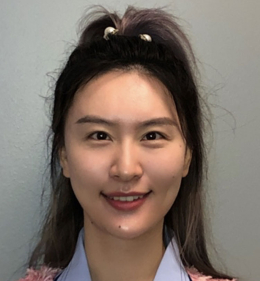
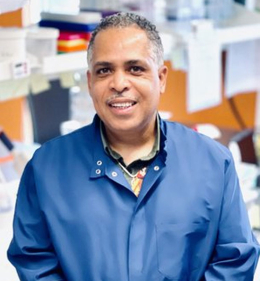
Selected Publications
- Roqueta-Rivera M, Esquejo RM, Phelan PE, Sandor K, Daniel B, Foufelle F, Ding J, Li X, Khorasanizadeh S, Osborne TF. SETDB2 link glucocortoid to lipid metabolism through Insig2a regulation. Cell Metab. 2016 Sept 13; 24(3):474-484. PMCID: PMC5023502
- Kim KY, Jang HJ, Yang YR, Park KI, Seo J, Shin IW, Jeon TI, Ahn SC, Suh PG, Osborne TF, Seo YK. SREBP-2/PNPLA8 axis improves non-alcoholic fatty liver disease through activation of autophagy. Sci Rep. 2016 Oct 21;6:35732. doi: 10.1038/srep35732. Erratum in: Sci Rep. 2016 Nov 29; 6:37794. PMID:27767079
- Lee JH, Phelan P, Shin M, Oh BC, Han X, Im SS, Osborne TF. SREBP-1a-stimulated lipid synthesis is required for macrophage phagocytosis downstream of TLR4-directed mTORC1. Proc Natl Acad Sci U S A. 2018 Dec 26;115(52):E12228-E12234. doi: 10.1073/pnas.1813458115. Epub 2018 Dec 10. PMID:30530672
- Divoux A, Sandor K, Bojcsuk D, Talukder A, Li X, Balint BL, Osborne TF, Smith SR. Differential open chromatin profile and transcriptomic signature define depot-specific human subcutaneous preadipocytes: primary outcomes. Clin Epigenetics. 2018 Nov 26;10(1):148. doi: 10.1186/s13148-018-0582-0. PMID: 30477572
